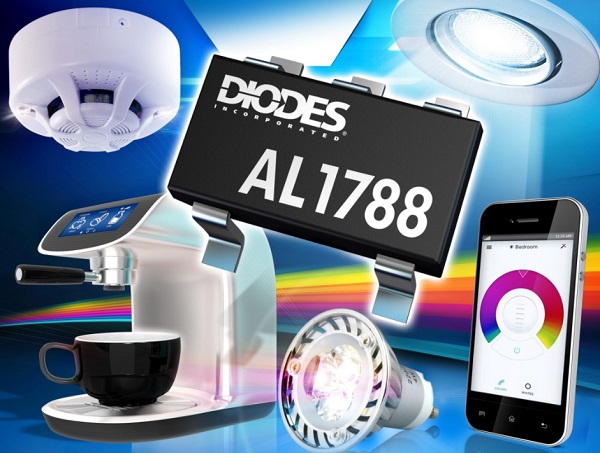Diodes Incorporated, a manufacturer and supplier of high-quality application specific standard products within the broad discrete, logic, analog and mixed-signal semiconductor markets, introduced the AL1788. This high-performance offline constant voltage and PFC controller has been developed to combine high power factor correction (PFC) with low total harmonic distortion (THD) and low standby power, making it well-suited for commercial applications and connected lighting requirements.
 |
|
(Image: Diodes Incorporated) |
Based on a platform that supports both flyback and buck topology, the AL1788 is designed for primary side regulation (PSR), which removes the need for feedback optically coupled from the secondary side. This delivers outstanding performance, such as high efficiency of up to 91%, good line and load regulation of 2% over a full range of line and load regulation, and low standby power of less than 0.2 Watts.
With a PFC of >0.9 and lower standby power than its competitors, the AL1788 operates with an external MOSFET to deliver constant voltage to an LED load. The high power factor is achieved through constant on-time operation, while its quasi-resonant mode valley switching method minimizes switching losses and provides outstanding EMI performance.
By exploiting PSR, the complexity of the secondary side is reduced, enabling a smaller overall profile suitable for solid state lighting installations. The output voltage is regulated when operating in constant-voltage mode through feedback provided by an auxiliary winding, coupled to the secondary side winding.
The AL1788 maintains its note-worthy PFC and THD performance across a wide input range over a load from 50% to 100%. The AL1788 features low start-up and operating current of just 3μA and 500μA, respectively (typical), combined with ‘Burst Mode’ operation. The AL1788 enables users’ designs to meet low standby power system requirements.
Comprehensive protections are integrated, including output-open protection and output-short protection, as well as overcurrent, overvoltage and over-temperature protection. Undervoltage lockout is also integrated.












